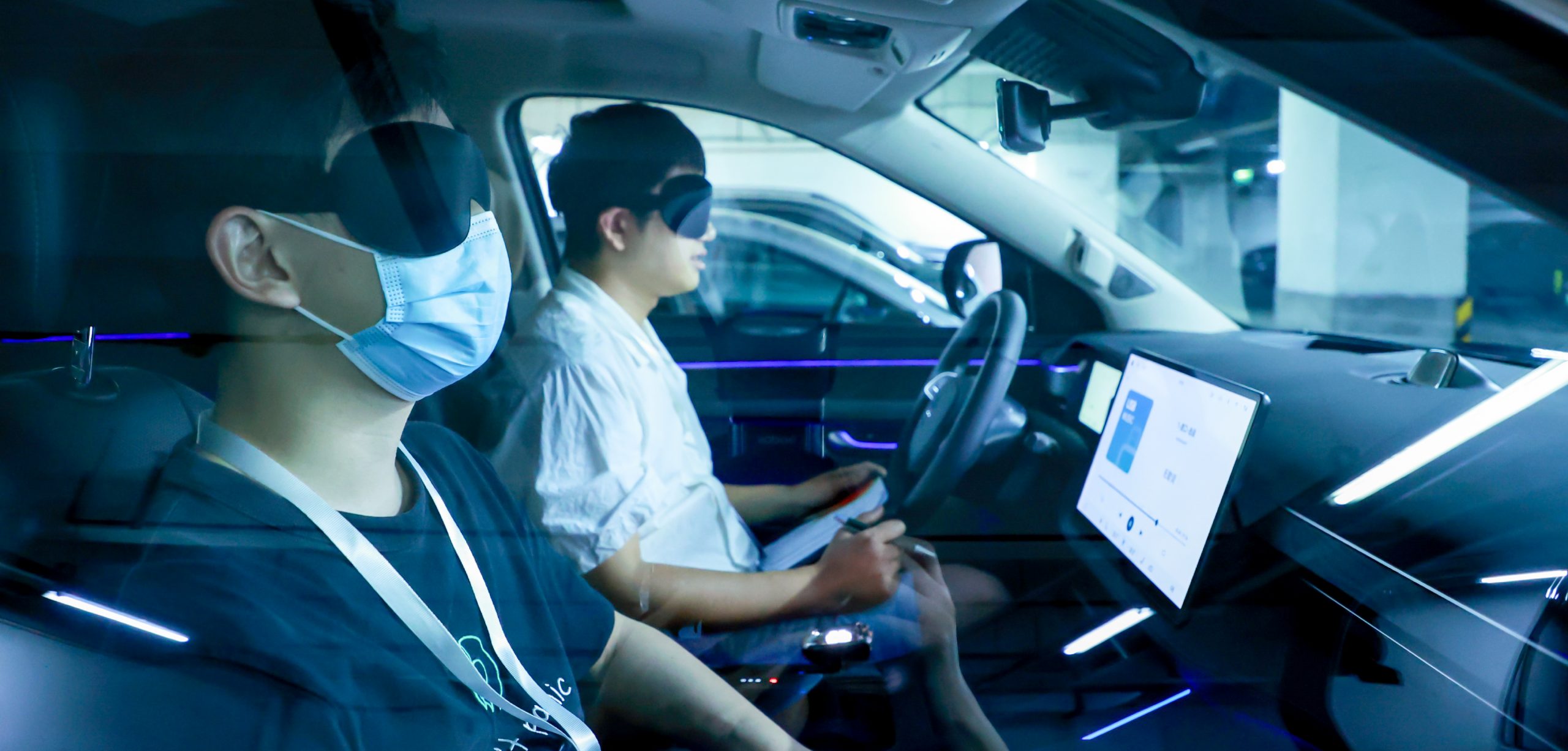On August 18th, Huawei held an audio innovation technology media communication event in Shanghai. During the event, Huawei introduced its audio brand, “HUAWEI SOUND,” and invited everyone to participate in an actual blind test of the AITO car equipped with related audio products.
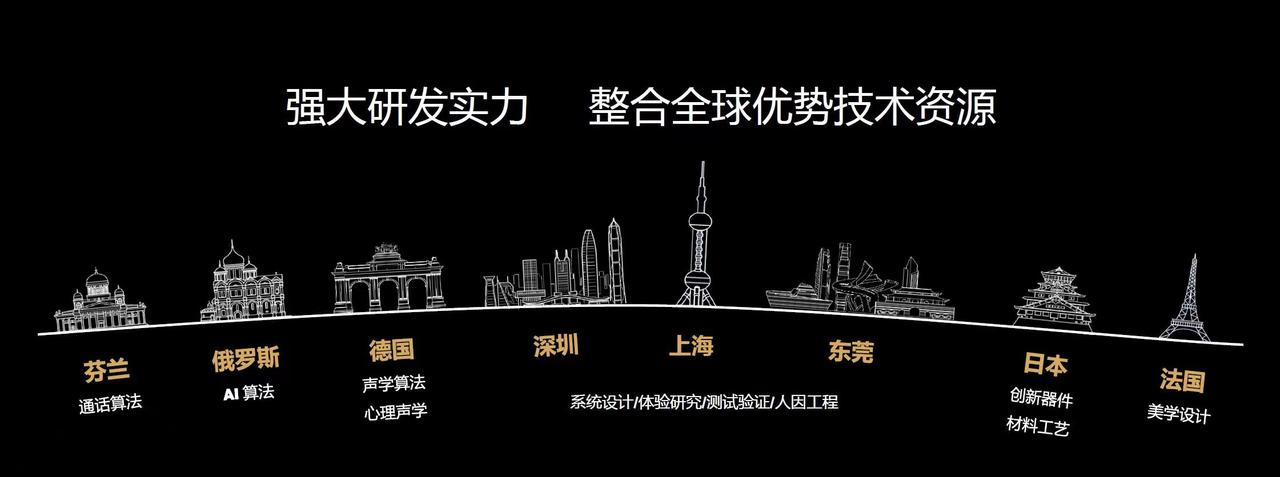
According to the introduction, Huawei’s audio business started in 2008, and currently has more than 500 R&D personnel. The Huawei Audio Lab in Shanghai, which is the largest audio lab in the world, including the following labs that were open to the media during the event:
-
Headphone noise reduction lab
-
Headphone conversation lab
-
Variable reverberation lab
-
Spatial audio lab
-
Car audio lab
All acoustic labs in the R&D base cover a total area of more than 2,000 square meters. In different types of labs, Huawei can conduct professional and standardized tests and experiments on different elements in the audio field.
Introduction to Audio Labs
In the headphone conversation lab, all six walls are made of sound-absorbing materials, and the static ambient sound level is only 9 dB. In this quiet environment, a person standing in the lab would feel tinnitus if they closed the door because it’s too quiet, and can hear slight friction sounds from moving clothes very clearly. Speakers in the lab can be placed according to the combination effect required by the sound field, and can simulate noisy scenarios in daily life, such as squares, stations, etc., where the conversation quality is poor.
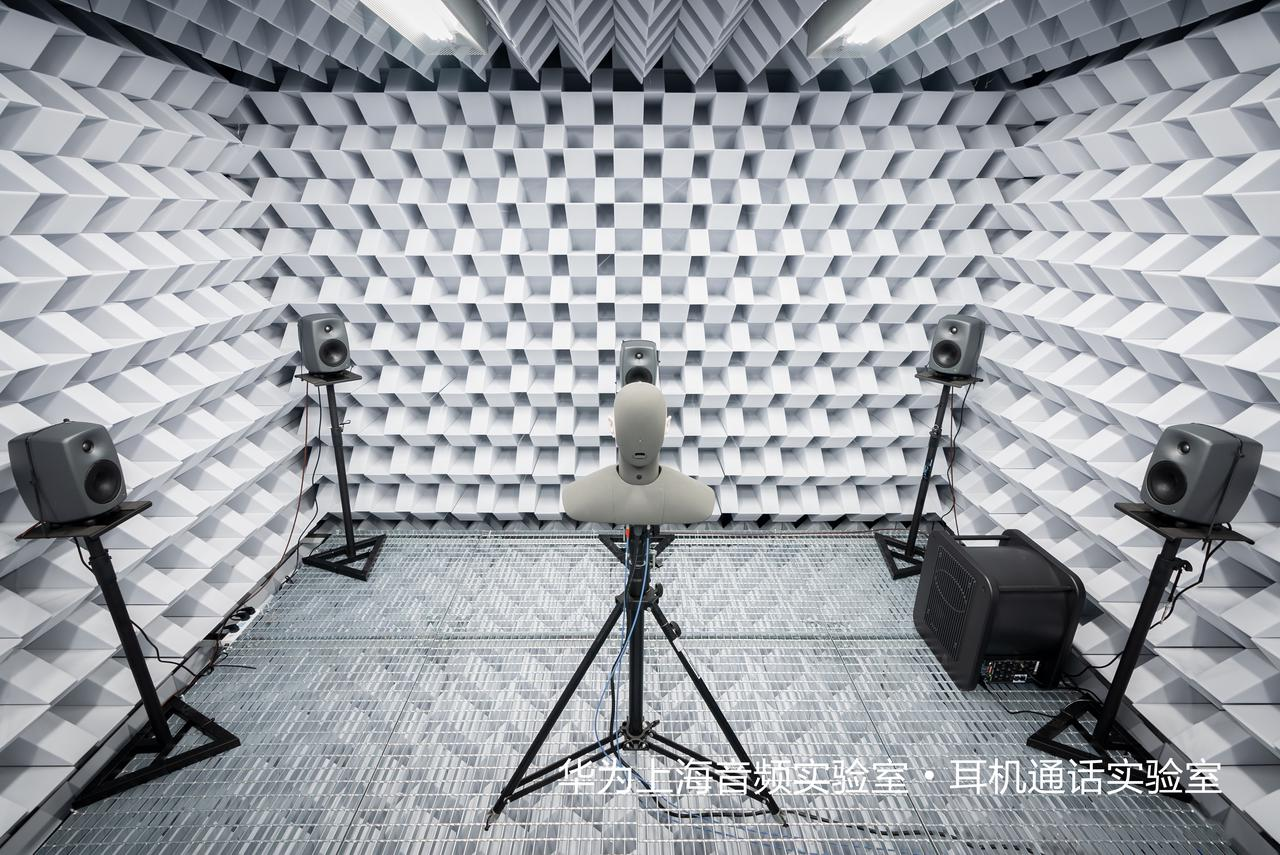
The model at the center of the lab can generate sound in its mouth, and there’s a recording device in its ear canal. Test headphone equipment can be worn, and conversation quality can be tested in the lab’s simulated environment.
For the noise reduction feature that everyone has been paying attention to in recent years, Huawei also set up a dedicated headphone noise reduction lab, where the sound-absorbing walls used are made of a small pit half-absorbing material with higher space utilization efficiency.
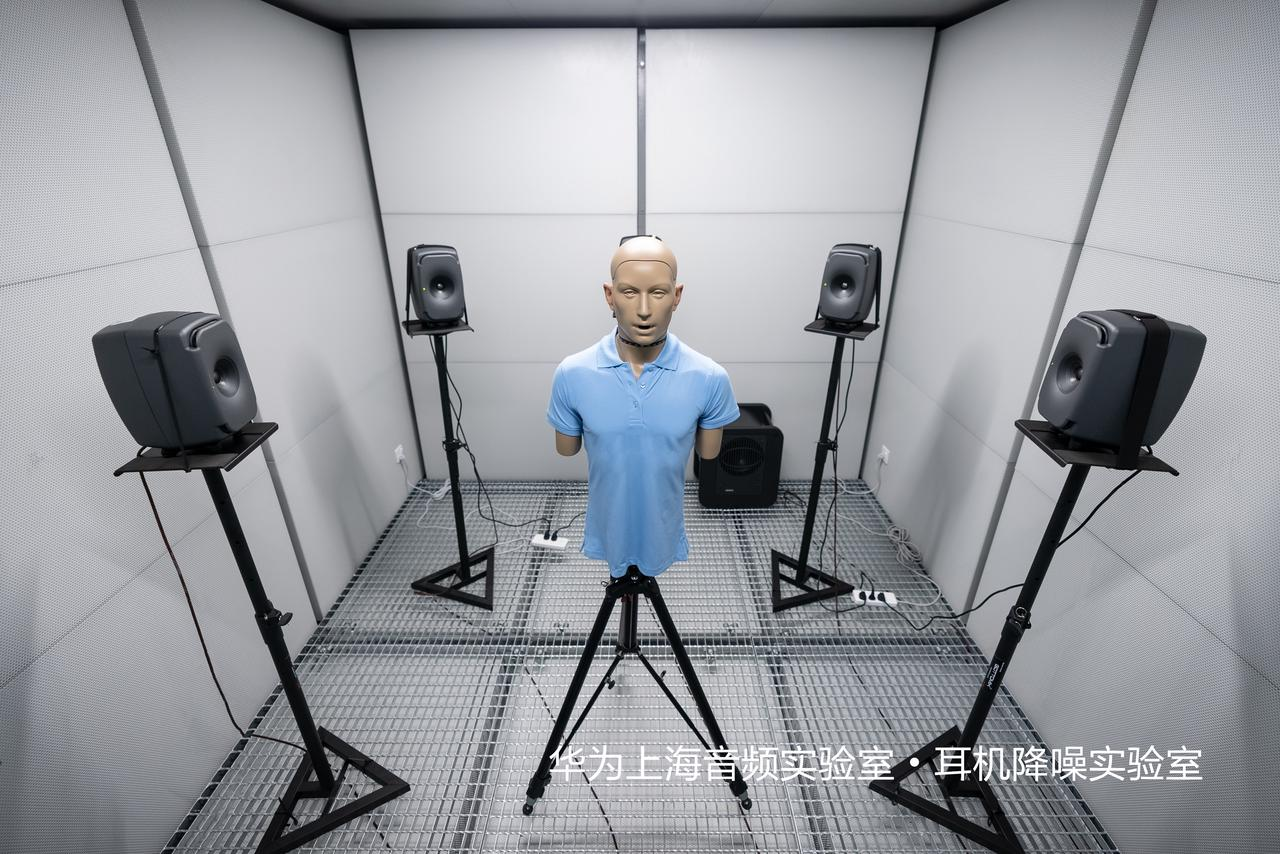
The model used in the noise reduction lab is quite special. Its head model is closer to a real person than in other labs, and its ear canal is made of soft material to best simulate the ear canal reflection of a real person, obtaining a better effect of “what people hear.” There’s also a special recording device inside the model to verify the noise reduction effect of the tested headphones by comparing internal and external sounds.Translation:
The Adaptive Sound Lab simulates real physical environments, including reflecting sound waves in environments such as living rooms, supermarkets, and restaurants. Different wall surfaces reflect sound differently, and the ceiling of the lab can also be adjusted to experiment requirements by moving it or switching to different plates with varying reflectivity.
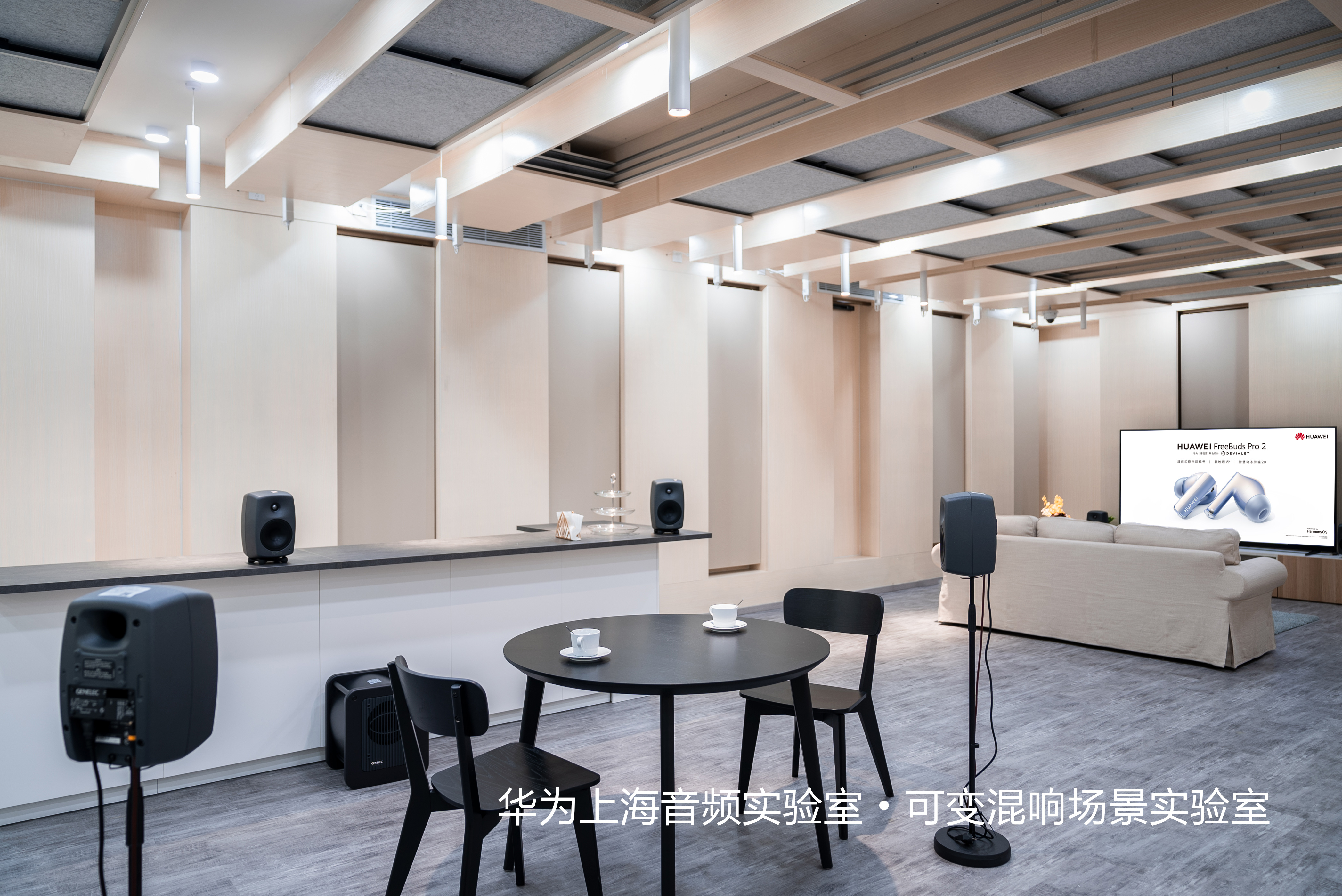
The Huawei R&D team set up speakers in the lab to play simulated environmental sounds in different areas. For example, the sound of tableware clashing in restaurants and the sound of people coming and going and packaging bags crinkling in supermarkets. Under such a reverb scene, the noise-canceling ability of the headphones can be more comprehensively demonstrated under different frequency bands and sound fields.
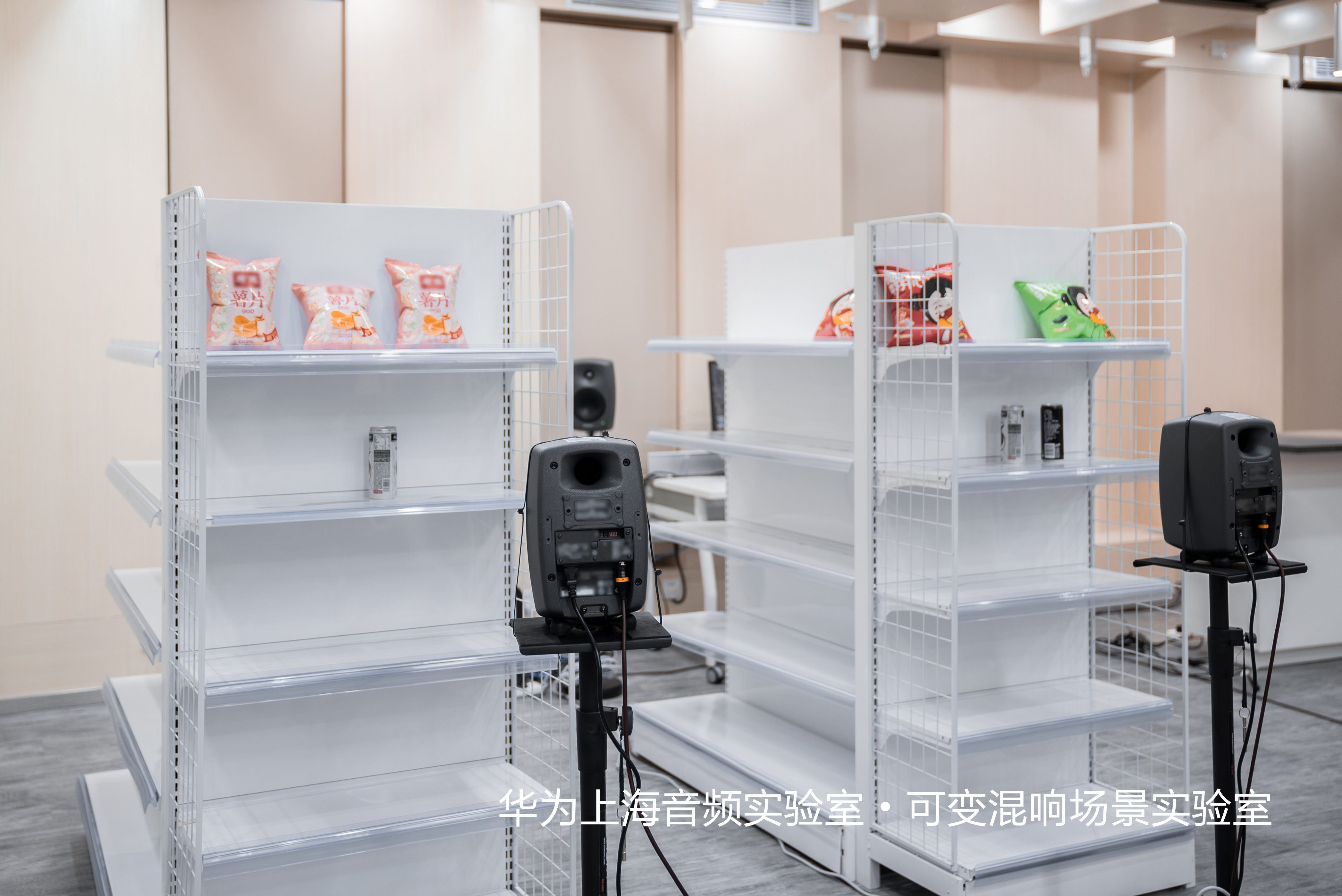
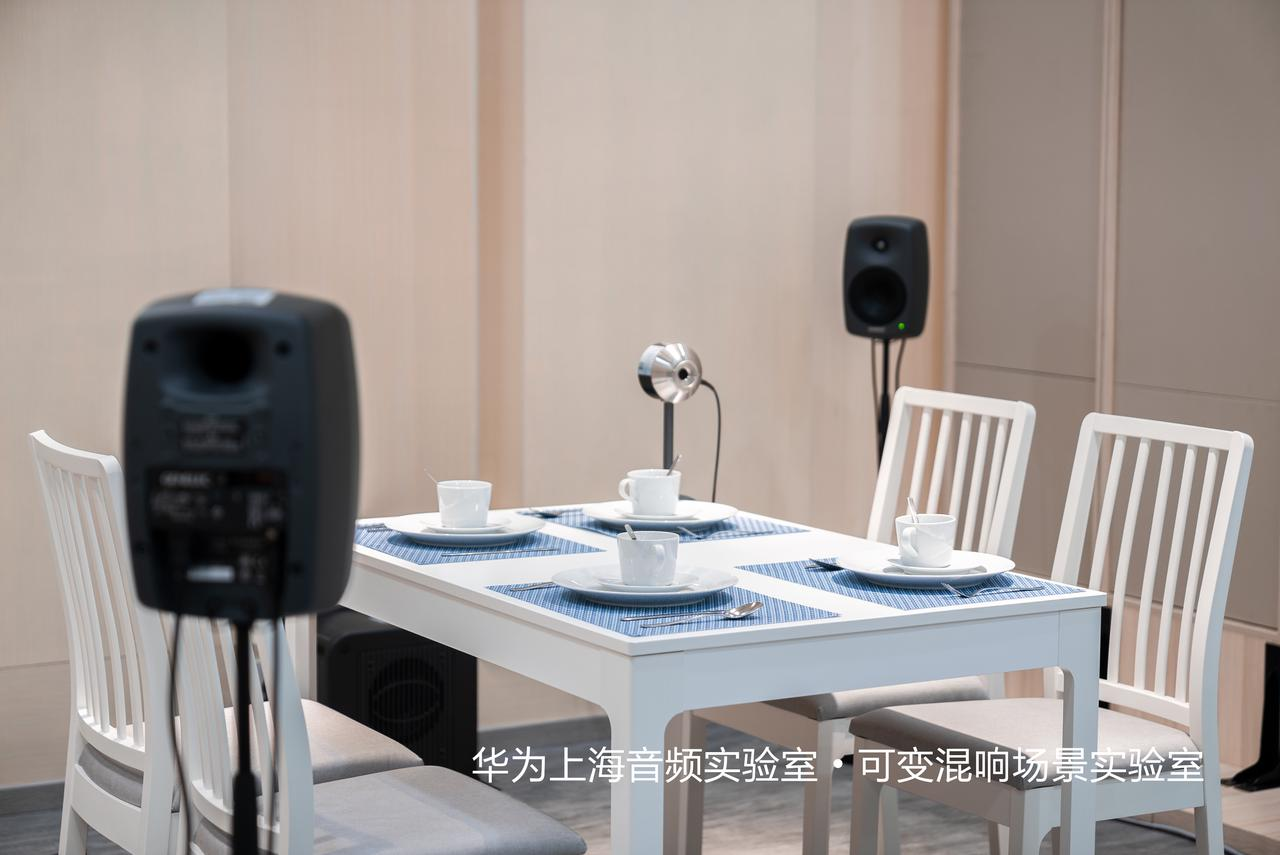
In practice, wearing Huawei FreeBuds Pro 2 in the room and turning on noise-canceling feature can intuitively feel that the background noise in low frequencies is filtered thoroughly, while human voices are still preserved. Overall, after an A/B comparison, Huawei FreeBuds Pro 2 have better noise-canceling effect than my personal AirPods Pro.
Later, we also went to the Spatial Audio Lab to experience Dolby Atmos sound. The surround sound effect in the lab is excellent, and the Huawei R&D team usually optimizes and tunes the audio algorithms here to achieve more immersive acoustic effects.
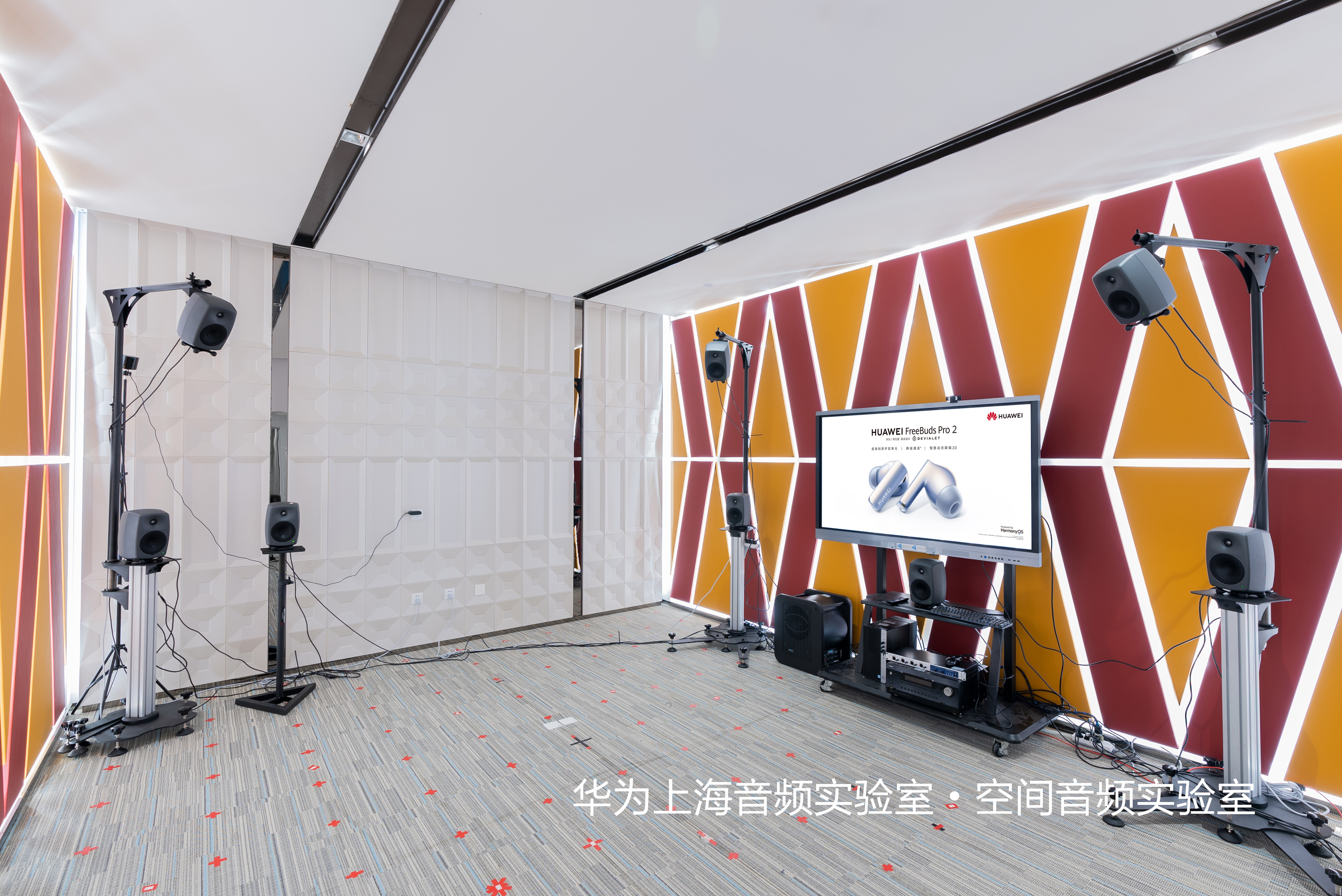
The Automotive Audio Lab could not be filmed during this visit. The lab also uses semi-concealed walls, and there are two test cars in the lab with human body models and multiple simulated environmental sound speakers inside. In the lab, the R&D team plays the pre-recorded actual in-car background noise from the same model of vehicle on the simulated speakers in the lab, and then tests various audio scenes. This approach allows more efficient testing and validation of in-car acoustic projects.
Automotive Audio Blind Test
For the blind test, Huawei prepared four cars, including a traditional luxury brand model, a new force model, and two WENJE models. The test results were highly consistent, and the two WENJE models received almost all media praise. In the audio-visual experience of “Ferry” and “California Hotel”, the HUAWEI SOUND system in the WENJE models performed well in fidelity, resolution, low-frequency diving, and sound field surround effect.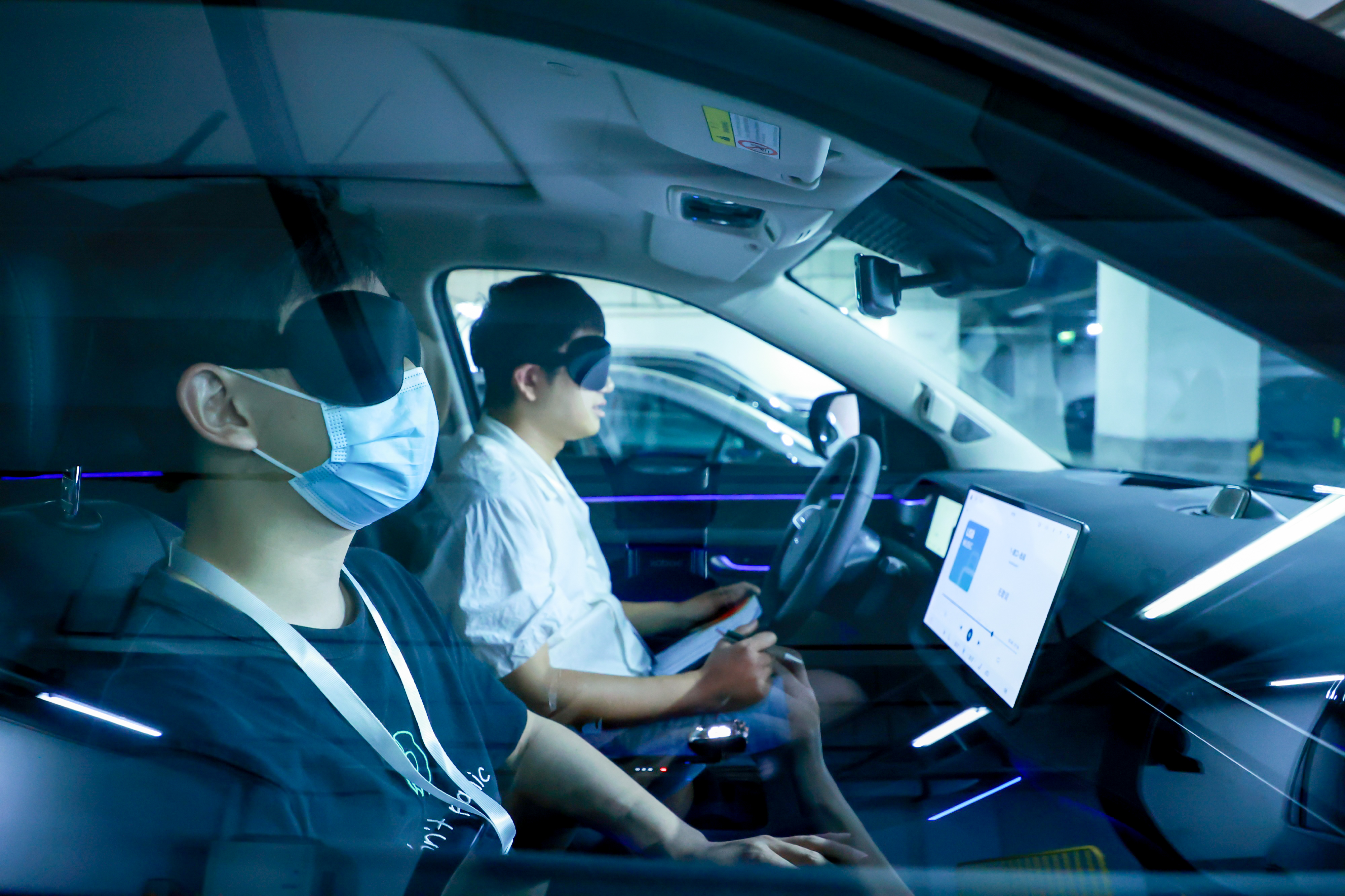
Taking the M7 as an example, the actual sound hardware consists of 15 car speakers and 4 headrest speakers, with the independent amplifier output power reaching 1,000 W. The Huawei Audio team has specifically tuned the cabin based on seat layout and cabin environment, completing relevant optimization such as active frequency division, loudness distribution, spatial calibration, distortion control, etc. on the software algorithm of the acoustics.

During the blind test, this audio system could equally preserve the details of different instruments, without emphasizing one or two parts in a way that leads to loss. No distortion or clipping occurred even when the system volume was high. Apart from the two cars compared that day, this audio system’s comprehensive performances could also be described as exceptional among comparable vehicles.
To take full advantage of the 7.1 channel system, HUAWEI SOUND can utilize an algorithm to simulate non-7.1 channel sound sources into 7.1 channels, achieving better surround sound performance, as explained by the manufacturer.
Final Words
Currently in the Chinese automobile market, Huawei Audio, compared to some old brands, is not so well-known in the field of automobile audio. However, as the high-end process of new energy vehicles continues to advance, non-brand-name acoustics have increasingly appeared on self-branded new vehicle models. Consumers in the field of automotive acoustics are also beginning to pay more and more attention to actual acoustic effects.
HUAWEI SOUND is currently the most high-end product line in Huawei’s audio business. Behind this product line lies a real audio R&D team and experimental investment in various critical points, using quantifiable scientific means to improve acoustic performance.
It is reported that the research findings of spatial audio might be introduced into future vehicle models with HUAWEI SOUND, realizing Dolby panoramic sound effects in the car. Based on the experience of existing M7 models, this more powerful system is worth looking forward to.
This article is a translation by ChatGPT of a Chinese report from 42HOW. If you have any questions about it, please email bd@42how.com.
